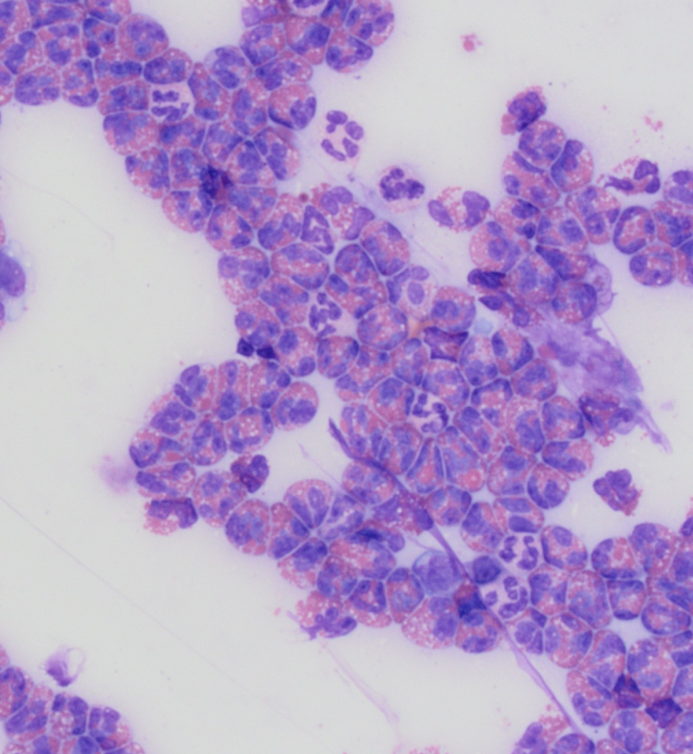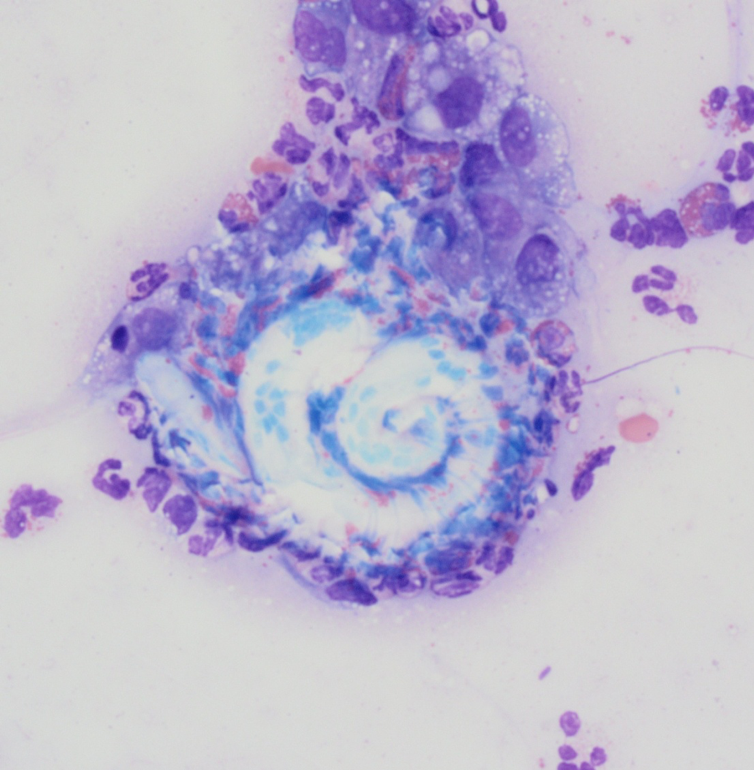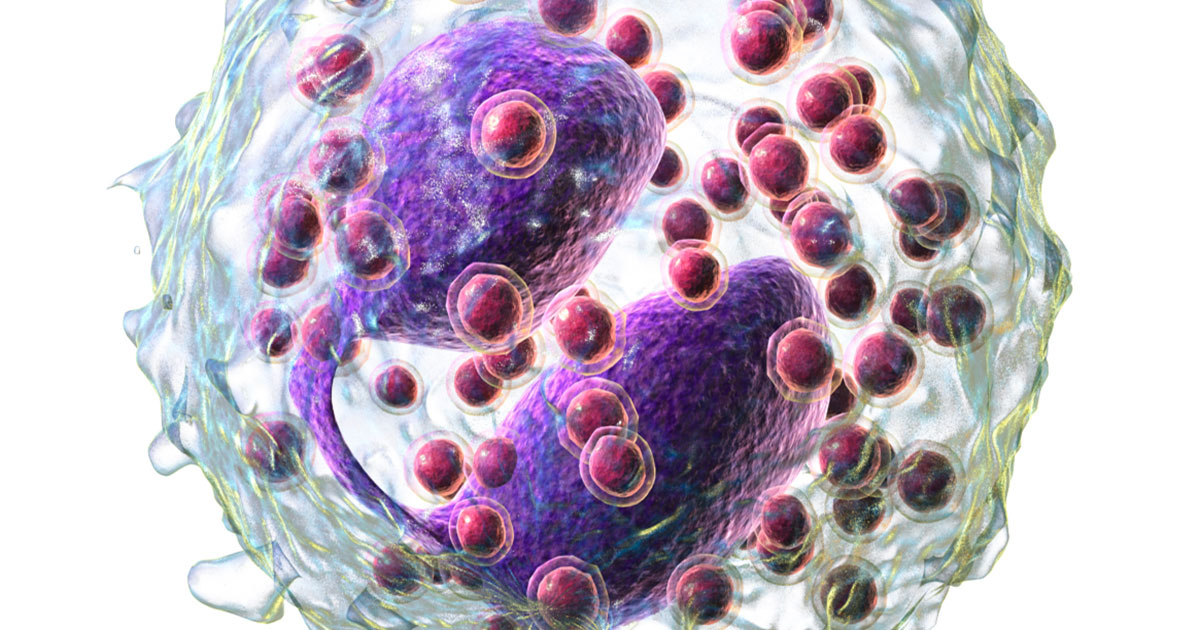Unless you’re a parasitic nematode (and I suspect the majority of you reading this aren’t) or suffer from an allergy (probably a bit more likely), it’s hard not to be a little bit excited when you see an eosinophil.
Just like their brothers-in-arms, the neutrophils, eosinophils are part of the front-line defences of the immune system, but they’re a little… crazier. If eosinophils were in The A-Team, they’d be howlin’ mad Murdock.
When we pathologists see a lot of eosinophils on a slide, we know we’re in for a ride – they’re the cells of “worms, wheezes and weird diseases”.
Little beauties
Here’s a few of them now (below). I mean, just look at them. They look like they’ve been contestants in Pimp My Neutrophils – I mean, look at the few relatively boring-looking neutrophils (with pale pink cytoplasm) absolutely surrounded by bling.

Eosinophils get their name from their distinctive appearance using Wright’s stain: eosin is the red component of the stain – it’s an acid, which means it binds to bases on the slide, and those beautiful red granules in eosinophils are packed with major basic protein (the operative word being “basic” as far as dyes are concerned).
All shapes and sizes
Apart from being eye-catching, eosinophil granules have very distinctive shapes in different species. The ones in the picture above are from a dog; cats have oval granules; and horses have beautiful, huge, round granules. The upshot of this is that you can amaze your friends at parties by telling them which species of animal a particular blood film came from (that right, there ain’t no party like a pathologist party).
Major basic protein is highly toxic to parasites, which is why eosinophils are the specialist off-the-wall teams recruited when it’s clear the more sensible-minded neutrophils are facing a problem beyond their skills. When they come across an invading parasite, eosinophils swarm all over them like angry bees protecting their queen, stinging them to death with major basic protein.
Here’s a group of them surrounding the larval stage of lungworm from a respiratory wash in a dog:

The lungworm larva is the blue thing coiled up in the middle (and it’s hard not to feel a teeny bit sorry for it here), surrounded by a mixture of eosinophils, neutrophils and those heavy-hitters of the immune system, macrophages, but you’ll notice it’s the eosinophils that are right up in the larva’s grill – look through those blue coils and you’ll see those distinct red granules right underneath.
As seen on TV
Honestly, to really appreciate the job of eosinophils, and to understand why the bee analogy is so appropriate (and why you might feel a little sorry for the parasite), you’ve really got to see them in action. Watch them beat up on a nematode here (this is unstained, because the cells have to be “fixed” [that is, dead] to stain them, so no beautiful granules, but it’s still an exciting watch, I promise):
Going rogue
Sadly, eosinophils aren’t always good news. As amazing as they are in tackling the tentacle-shaped and wriggling invaders of the body, like all soldiers everywhere, they’re not always used wisely.
Type I hypersensitivity (allergies, for the most part) is triggered by over-exuberant recruitment of eosinophils, inappropriately firing out their major basic protein (among other things) against innocent antigens, irritating the skin (if you have atopy), the nasal mucosa (hay fever), or the lungs (asthma) to no good purpose.
They’re also one of the cells most commonly recruited as a “paraneoplastic effect” – this means that some misfiring cancer cells can inadvertently attract them in their thousands, again causing irritation and misery, and in part explaining why mast cell tumours can be itchy to the point of extreme pain (although histamine, from mast cells, probably plays more of a role in this).
Led by donkeys
Despite these problems, I find it hard not to love the sheer bonkersness of eosinophils.
In the immune system war movie I’m writing in my head, the eosinophil is the slightly unhinged specialist member of the squad, crazy enough that they seem immune to the horror around them. All the neutrophils think they’re untouchable, and they almost make it to the end of the film, but perish in the climatic showdown… although it’s possible I’ve overthought this.
Nevertheless, they may be crazy, and they may occasionally be led by donkeys, but I hope you agree that eosinophils are certainly lions of the immune system.

Leave a Reply